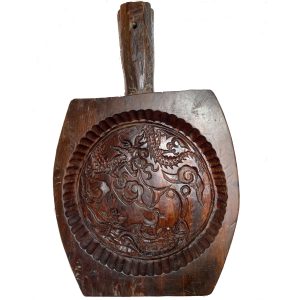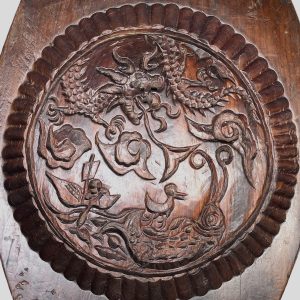Antique Porcelain Spouted Jar with Lugs, China (1106WHE) $135
$135.00H: 5” W: 5.25” D: 4.5” | FREE SHIPPING!
Utilitarian ceramics like this were used in home kitchens and restaurants to hold oil, sauces, soy or other liquids. This spouted blue and white porcelain jar has four loops, also called lugs, so a natural fiber such as rattan could be threaded to either secure a top create a way to hang it to a peg. Sealing the top was very useful if the jars contained liquid and needed to be transported. The piece is decorated in a free and expressive manner with a charming impression of a country scene of a building in a landscape surrounded by tall trees. The cobalt is thick and dark in some areas of the foliage and applied with a thin, sparing and light brush elsewhere.




